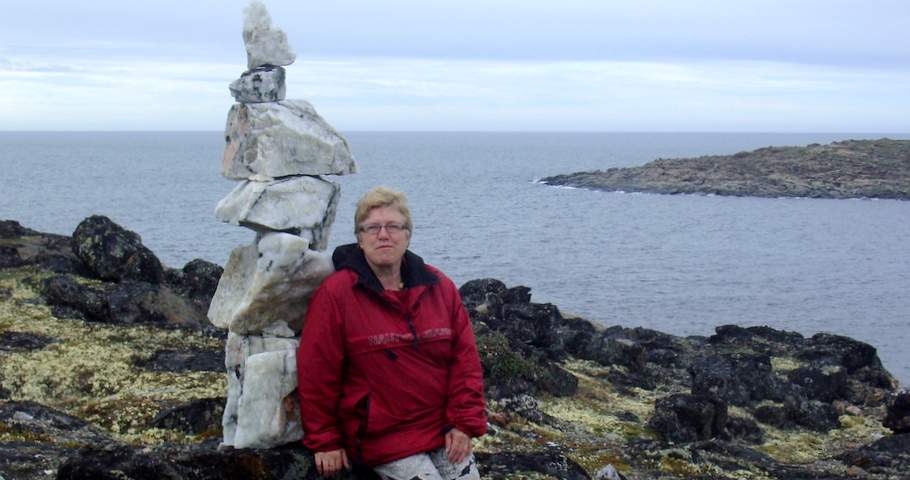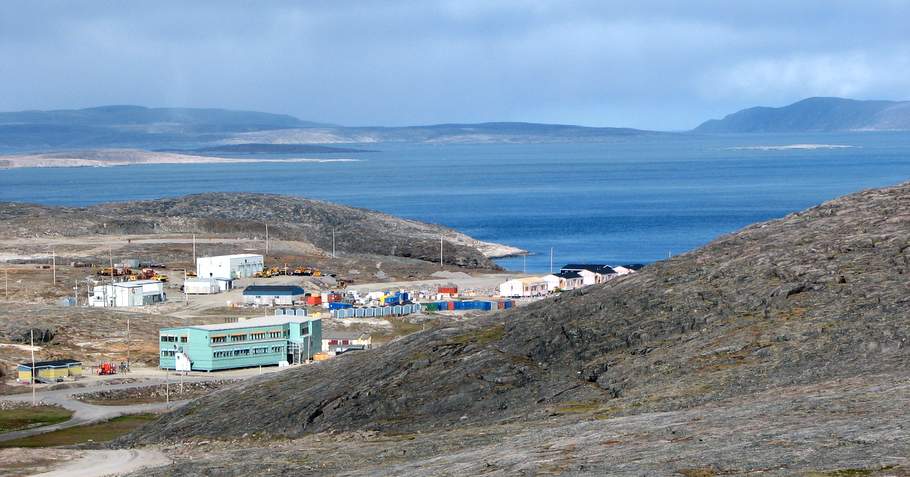 If there is one justice in this world, my project qualifies as one seeking justice. It has everything to do with life and about making sure we bring to others a strong sense of justice and the power of faith to achieve it.
If there is one justice in this world, my project qualifies as one seeking justice. It has everything to do with life and about making sure we bring to others a strong sense of justice and the power of faith to achieve it.A heartfelt response to situations that literally wrenched families apart
I want to explain to my Inuit friends that even though no one asked me to do this, I chose to turn my life upside down to do this project. I believe in you and I believe that as communities, you have all it takes to make it right by your women and your children and your communities in general. When I started this project, it was a heartfelt response to situations that literally wrenched families apart when uprooting the children and sometimes sending them far away so that it became very complicated to keep the contact.
My intention is to work for the children
From the time I worked in Nunavik until now, I really think things could have been done differently. Maybe we need to re-write some policies. Policies and practices reflect longstanding and deeply embedded mother-blaming culture and father invisibility ideologies that shape child protection systems. My intention is to work for the children so that things can happen differently. I feel that mothers should have all the help they can be given because they are not dissociable from their children. One aspect in particular needs expansion: clearly education, so as to allow all to know what they are dealing with regard to the law and are thus better prepared when they are facing the courts of justice. Family law is a complex tool and aspects of the protection law have to be understood. An example of this is the"notion of risk". As an example, if a mother has lost her five previous children, she will not be allowed to keep any other child she might bear.From my observations, while I was up North, the everyday suffering appeared as a giant hand with its backhand most striking, as in cases such as the little girl who was moved 56 times between the ages of two and six.
The perspective of potentially ruining a child’s outcomes claimed my commitment
The point I keep wanting to make is that the perspective of potentially ruining a child’s outcomes claimed my commitment right then and there. Despite my best efforts to see the placements of children as acceptable solutions, my response was to think about how animals are treated today. We would never think of moving our dog to 56 kennels; we would certainly have found a better, more permanent solution. As for our right to do this, I ask myself questions to which this project is trying to be an answer to. Canada can be a diverse, exciting, productive, caring country...a country where every child has an equal opportunity to grow up full of hope and enthusiasm for the future (Martha Flaherty, President, Pauktuutit Inuit Women's Organization).Projects like mine are grounded in reality but they must be on the same page as other projects to exist. In this instance, it is important to work with other like-minded organizations. Like their parents who were torn from their families and sent to residential schools, a generation or two later, First Nations and Inuit children are also uprooted from their communities and made more vulnerable by the impact of the many placements that do not take into account their needs. They too are torn from their culture and their language because their parents are unable to raise them in living conditions that support their full development. THE CHILDREN NEED A VOICE.
The inefficiency of the social safety net affects children as much as their living conditions affect their health and even their behavior. Their access to quality education, healthy foods, and adequate housing conditions plays a vital role in the impact of their welfare.
The apprehension of children from their homes and communities does not work
The institution, representing our society, should nonetheless verify the commitment and motivation of the parents towards their children. Not only do workers have a deficient understanding of complex situations due to a lack of training and experience with the Inuit, the institutions micro-manage and children are removed from their homes and communities and their numerous placements not subjected to any questioning.Instead of reinforcing families, instead of making extended families participate to find solutions to place them in their community, they are sent to other communities and when no one can be found they are sent to Whites in the south. When talking to a white woman about her Inuk child, she said she was just waiting for the child to be 12 and she was going to make sure the child chose her as a parent.
For many Aboriginal and Inuit families, the hardship of parenting in an overcrowded house puts their children at risk in their homes and in danger of being removed by our protection agency. When their security or development is compromised, the children are removed from their environment. The parent who is present in court (often a single parent) has a limited time to correct the situation. However, one must ask who is up to correcting situations of violence or heavy drinking in a home inhabited by 15 other people?
Our law frightens many Aboriginal communities
Fittingly, our law frightens many Aboriginal communities who see it as a threat to the survival of their culture due to the assimilation of many of their children in white families. This law has perverse effects. Many Aboriginal parents who have suffered the trauma of residential schools have difficulties to regain control and keep custody of their children.There are now more children in jail and in foster care than there were in residential schools. Study after study has shown that investing in families, education and healthy communities is less costly than what we are paying for sick and unhealthy communities, for courts and jails.
Children suffer the impact of many placements
Unequal treatment of justice and insufficient human resources in social services are largely responsible for making later agreements difficult with the parents when it comes to determining the needs of their child and their ability to exercise their roles and responsibilities. Unfortunately for many mothers, social agents quickly come to elaborate a life plan that is deemed to correspond to the best interests of the child without really consulting the mother. Some children have been permanently placed outside the communities. We know there are many; these children have more or less disappeared from official statistics. They are often lost to their communities.Petition to empower the mothers and to reduce placements of the children
Like all that matters, we have to make the connections with what we can all do to help. This petition to be given to PM Justin Trudeau hopes to restore dignity but also the children’s rights to a stable family and harmonious community.No Child Should Take the Long Way Home
Children, mothers, and communities are the object of this project No Child Should Take the Long Way Home. After all, every child is born with the right to have a better chance at a life free from abuse and violence.
But the children are very vulnerable when they are removed from their birth families. When they are removed not only from their families but from their community, children lose out on being raised by their own families, in their own communities. As a result, there are increased numbers of Inuit children in child and foster care.
No Child Should Take the Long Way Home is a grassroot initiative to help children in need of loving care, of a protective and stable environment to meet their basic needs for protection, shelter, and education in a safe house in their own community.







No comments:
Post a Comment